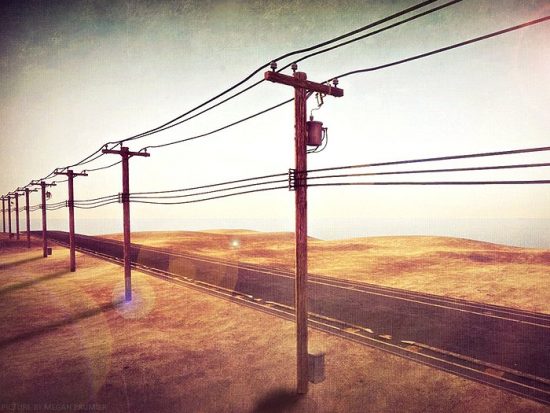Though ubiquitous in urban and rural landscapes, most people barely notice utility poles. Nevertheless, utility poles play a large role in national broadband policy. Improving pole access won’t generate the headlines like billion-dollar spectrum auctions and repeal of Title II Internet regulations, but it’s just as important for improving broadband competition and investment. To that end, the FCC is proposing to create “one-touch-make-ready” rules for FCC-regulated utility poles across the country. I was pleased to see that the FCC will likely implement this and other policy recommendations from the FCC’s Broadband Deployment Advisory Committee.*
“Access regulations”–like must-carry of broadcast TV, net neutrality, and telecom network unbundling–are always controversial and frequently fail. However, in my view, one-touch-make-ready is an example of useful access regulation and I think it’s likely to succeed at its aims–more broadband competition and investment. Pole access appears to be, using former FCC chief economist Jerry Faulhaber’s phrase, an efficient market boundary. FCC pole access mandates are feasible because the “interface”–physical wires and poles–is relatively simple and regulatory compliance–did the entrant damage existing users? did they provide notice?–is pretty easy to ascertain. Typically, visual inspection will reveal damage and the liable party is usually obvious.
As the FCC says in the proposed order, these proposed modifications and one-touch-make-ready,
put[] the parties most interested in efficient broadband deployment—new attachers—in a position to control the survey and make-ready processes.
Reasonable people (even on the free-market side) will disagree about how to regulate utility pole access. One-touch-make-ready was a controversial proposal and commercial operators have been divided on the issue. In the end, it was not unanimous but the BDAC reached large consensus on the issue. In my view, the FCC struck the right balance in protecting existing companies’ equipment and promoting infrastructure construction and competitive entry.

Some utility pole basics: Utility poles are often owned by a phone company, a utility company, or a city. At the top of utility poles are electric lines. (The FCC is not talking about doing work near the electric lines on top, which is trickier and more dangerous for obvious reasons.) The rule changes here affect the “communications space,” which is midway up the poles and typically has one or several copper, coaxial, or fiber lines strung across.
For decades, the “market” for communications space access was highly regulated but stable. National and local policy encouraged monopoly phone service and cable TV provision and, therefore, entrants rarely sought access to string up lines on utility poles. In the 1990s, however, phone and cable was deregulated and competition became national policy. In the last ten years, as the price of fiber broadband provision has fallen and consumer demand for competitive broadband options has increased, new companies–notably Google Fiber–have needed access to utility poles. The FCC notes in its proposed order that, going forward, “small cell” and 5G deployments will benefit from competitive, lower-cost fiber providers.
The pre-2018 approach to pole attachments, wherein many parties had effective veto rights over new entrants, was creating too many backlogs and discouraging competitive providers from making the investments necessary. The FCC’s proposed rules streamline the process by creating tighter deadlines for other parties to respond to new entrants. The rules also give new entrants new privileges and greater control in constructing new lines and equipment, so long as they notify existing users and don’t damage existing lines.
I’m pleased to see that the Broadband Deployment Advisory Committee’s recommendations are proving useful to the agency. It’s encouraging that this FCC, by taking a weed-whacker to legacy policies regarding spectrum, pole access, and net neutrality, is taking steps to improve broadband in America.
*I’m the vice chair of the Competitive Access working group.
Related research and commentary:
The Importance of Spectrum Access to the Future of Innovation (pdf)
A Truly ‘Open Internet’ Would Be Free of Burdensome FCC Regulation (NRO)

 The Technology Liberation Front is the tech policy blog dedicated to keeping politicians' hands off the 'net and everything else related to technology.
The Technology Liberation Front is the tech policy blog dedicated to keeping politicians' hands off the 'net and everything else related to technology.